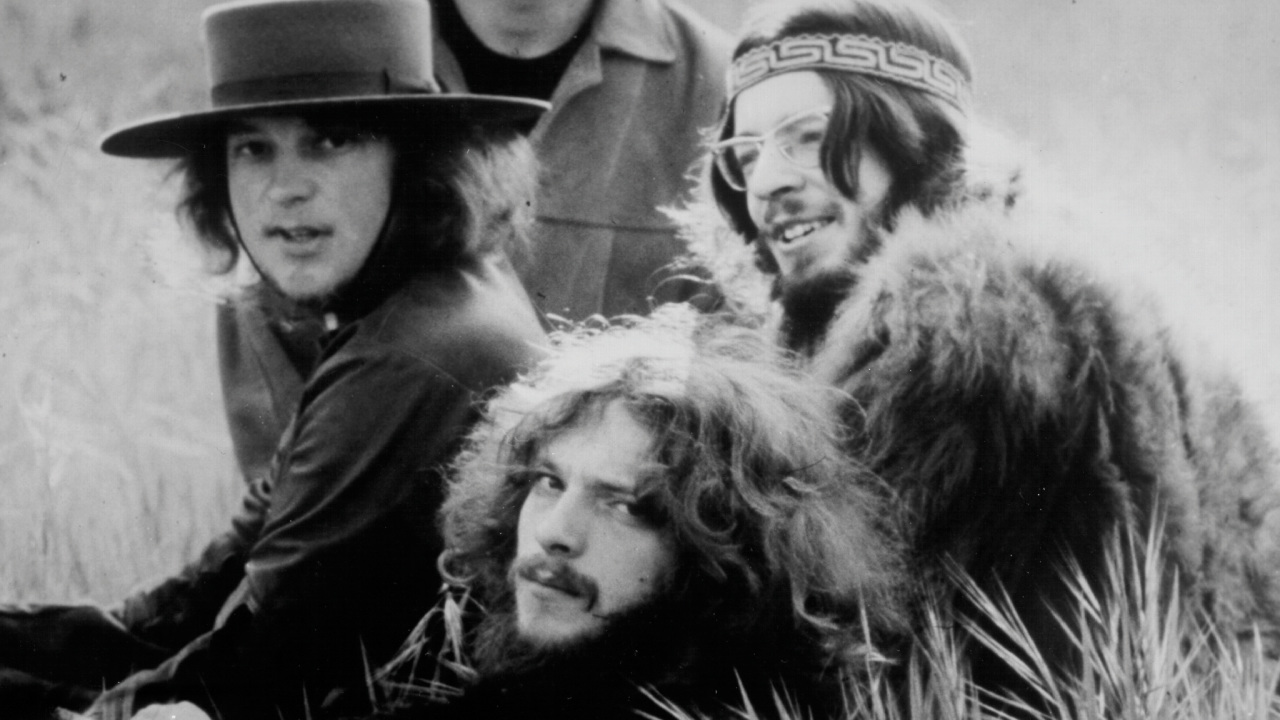Relive the magic of some of the greatest imprints of all time in Prog’s bite-sized label guide.
Named after novelist Alec Waugh’s 1955 bestseller Island In The Sun, Island Records is the daddy of them all. Founded by Chris Blackwell in Jamaica in 1959, the imprint has gone from its independent roots to become a major part of Universal, the world’s biggest record company. Yet it still manages to retain and revel in its maverick independent spirit. Although primarily a Jamaican reggae and conventional rock label, its dalliance with prog through its own signings and, most importantly, its licensed and distributed imprints (EG, Chrysalis and Virgin) made it unique in having such a range of influential artists on its books.
Having had success importing Jamaican records to the UK, Blackwell initially wanted to devise another label for his burgeoning interest in the UK rock market, until he realised that Island was too good a brand to give up. The now famous Island pink label was devised in 1967 to house an increasingly giddy array of psych, folk and prog acts. In the 1970s, when Blackwell marketed one of his most authentic Jamaican artists to a white rock audience, Bob Marley was able to marry both sides of the Island label.
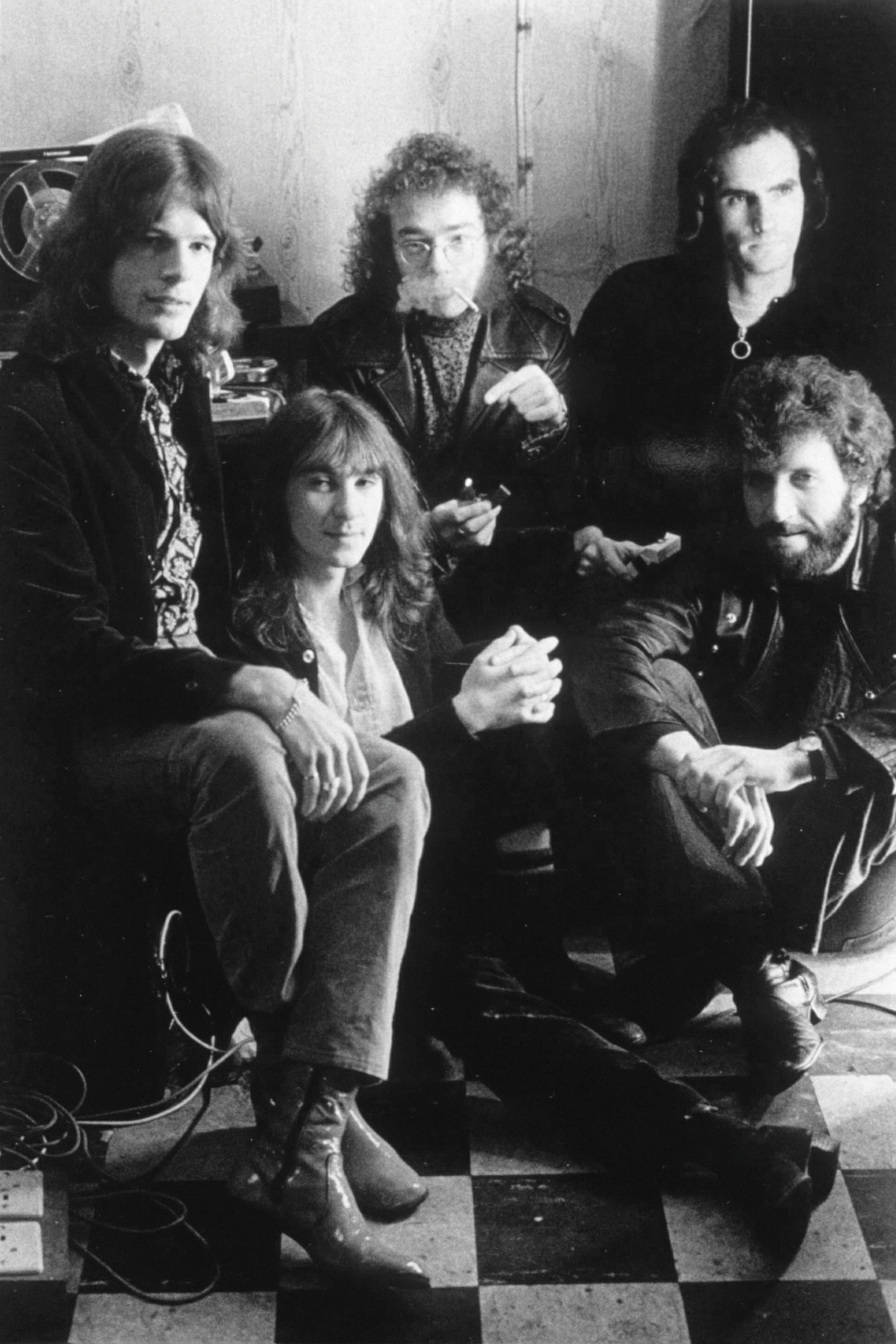
Above: King Crimson’s debut album was released on Island in 1969.
Chris Blackwell was always good at finding talent; not just the artists he signed, but the teams he had around him, from characters such as label boss Tim Clark (who even today co-manages Robbie Williams among others); Guy Stevens (mercurial producer who worked with Mott the Hoople and later recorded The Clash) and former Melody Maker deputy editor and first presenter of The Old Grey Whistle Test, Richard Williams, as head of A&R, to name just a few. What was also striking was the label’s eye for detail. Blackwell, a jazz fan at heart, looked to the genre’s classic sleeves to ensure the label had a distinctive yet diverse house style. As a result, many fans and collectors have fallen deeply in love with Island, especially the releases on its aforementioned pink label.
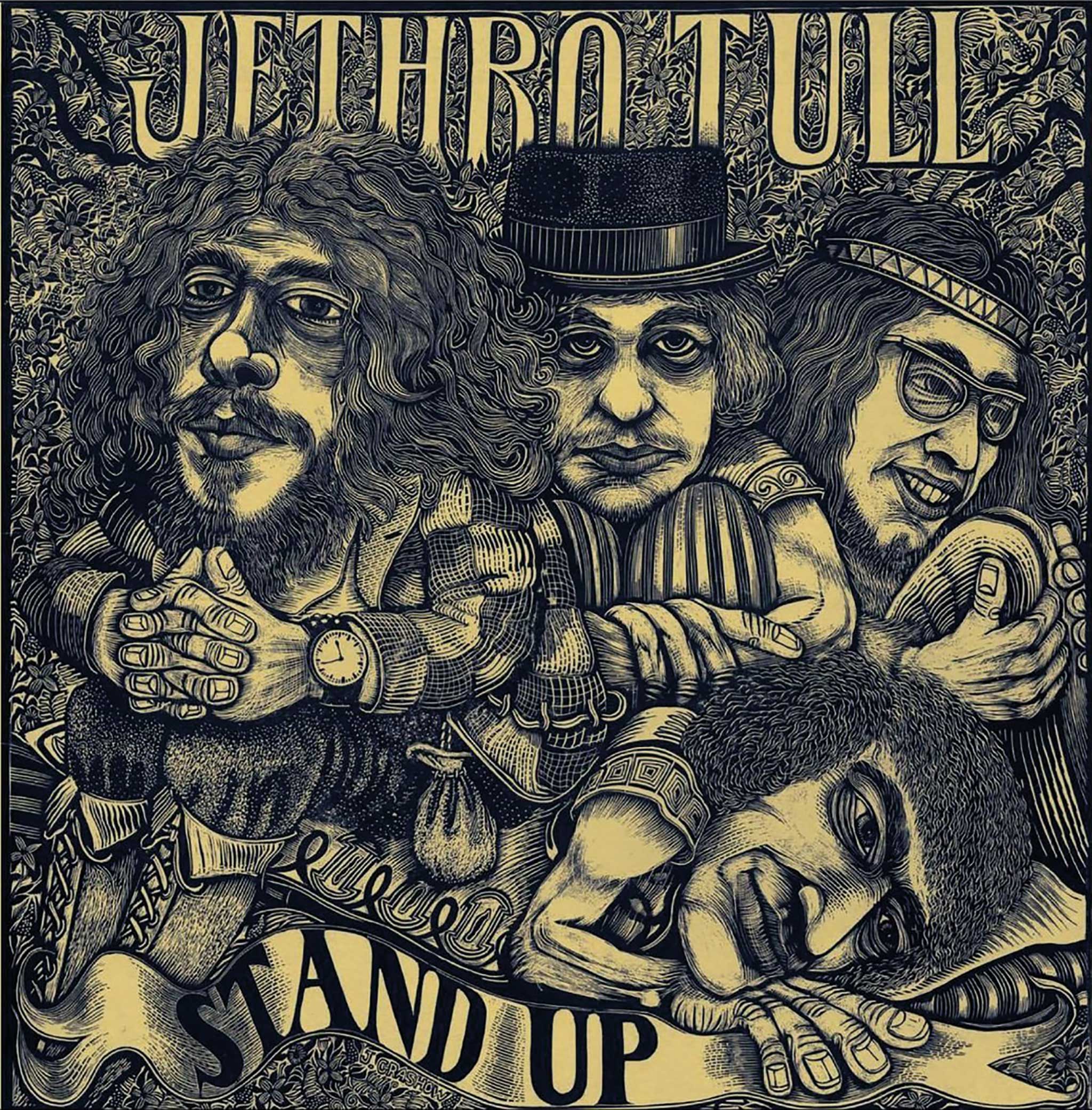
Above: Jethro Tull’s Stand Up in 1969 was Island’s first No.1 album.
HOW IT BEGAN
Chris Blackwell was born in London in 1937 but grew up in Jamaica, where his mother’s family were prominent landowners. While working in the family hotel in Montego Bay, Blackwell heard Bermudan jazz pianist Lance Hayward, and knew he had to record him. Working with local producers Graeme Goodall and Leslie Kong, Blackwell set up Island in July 1959.
Their first release that year was Lance Haywood (sic) At The Half Moon Hotel, Montego Bay with a Chris Blackwell production. Blackwell explained its genesis 50 years later: “It was purely driven by being a fan. It wasn’t driven by thinking, ‘This is a great business to go into’.” It was this fandom, and understanding other people’s fandom, that was to make Blackwell work so diligently on behalf of his artists.
In 1961, Blackwell worked as a location scout on Dr No, which most thought would be a B-movie, but became the first of the James Bond film franchise. Its success galvanised Blackwell, who turned down producer Harry Saltzman’s offer to join his Eon Productions in the UK. Instead, Blackwell relocated to the UK to fully establish his record label, which had now acquired 26 singles and two album releases. “I loved music so much,” said Blackwell later. “I just wanted to get into it, or be as close to it as I could.”
Blackwell made his initial impact on the UK market by distributing Jamaican singles on a variety of labels, including Island, from the back of his Mini Cooper. “I felt I was in a different business entirely from the world of EMI and Decca,” he said. “They controlled 95 per cent of the UK pop business, but that wasn’t my world.”
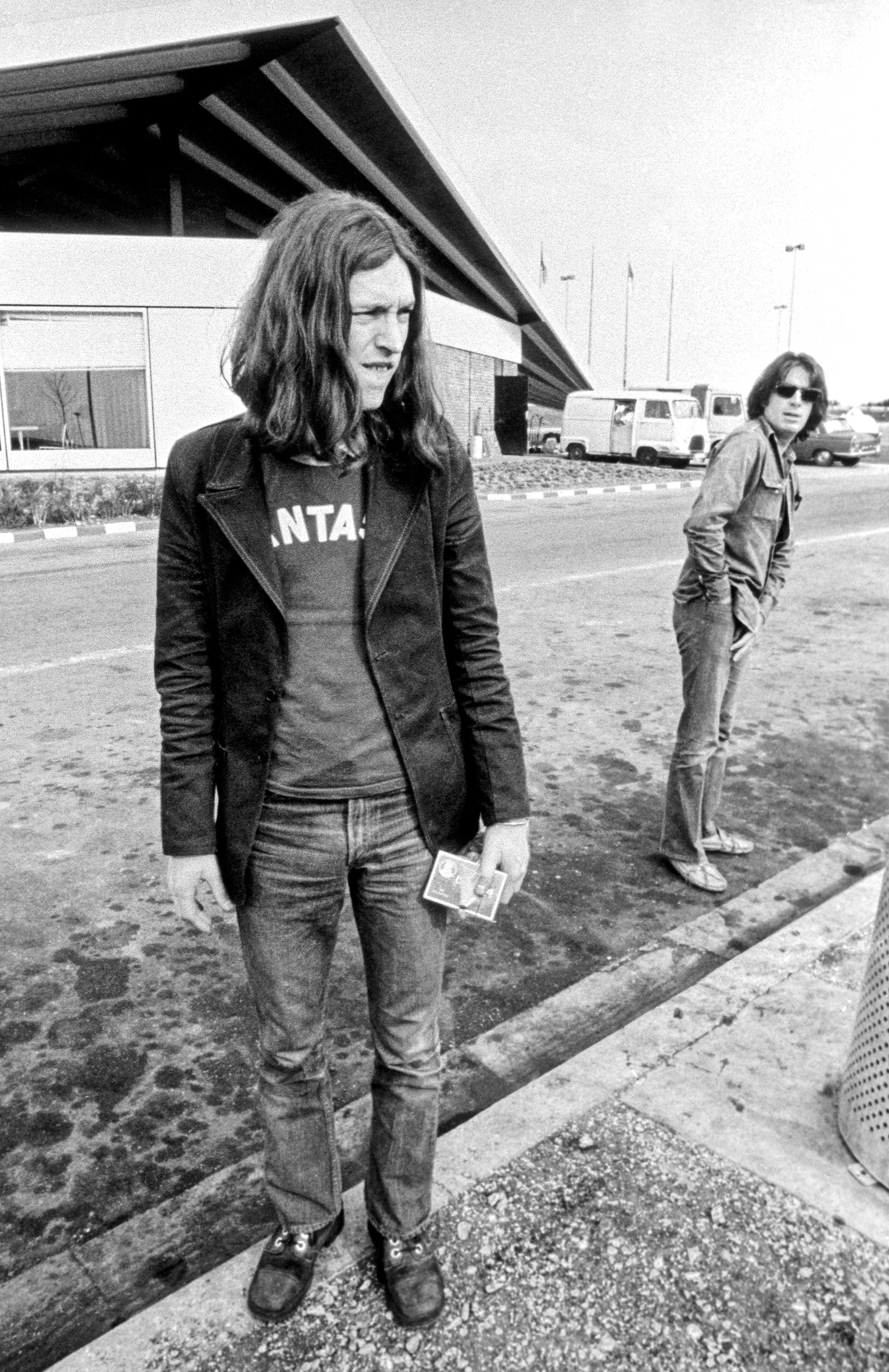
Above: On the road with Traffic: Steve Winwood and head of Island Records Chris Blackwell (in background).
Blackwell also set up a production company. His first major hit was by teenage singer Millie Small. My Boy Lollipop in 1964 was licensed to the Phillips label, whom Blackwell rightly felt at that juncture had a better distribution network.
The same year, Blackwell signed the Spencer Davis Group, and again licensed their releases to Phillips. The group spurred Blackwell into looking more at UK-based soul-influenced rock music. When the group’s teenage vocalist and organist Steve Winwood set up Traffic in ’67 with fellow musicians Jim Capaldi, Dave Mason and Chris Wood, Blackwell put them together in a cottage in rural Berkshire, thereby creating the template for bands ‘getting their heads together in the country’. Traffic created a pop-psych-folk pot pourri, which would become a significant signpost for prog.
Also in 1967, Blackwell teamed up with Lee Gopthal to establish Trojan Records, which would release the majority of Jamaican music, leaving Island to concentrate further on its pink label releases.
THE GOLDEN PERIOD
With the artists on its pink label, Island fully embraced the hippy ethos. You Can All Join In, its entrée into the budget-priced sampler market (so de rigueur back in the day), was a perfect introduction to this strange world. Released in 1969, the cover featured most of Island’s rock roster, looking somewhat cold and uncomfortable in Hyde Park.
The same year, one of the acts featured, Fairport Convention, went from being Dylan copyists into singlehandedly inventing the UK folk rock genre with the Unhalfbricking album. Other groundbreaking releases from Island included Nirvana, the collaboration between songwriters Patrick Campbell-Lyons and Alex Spyropoulos, who scored the 1968 hit single Rainbow Chaser. Production and marketing deals with the fledgling Chrysalis and EG Records meant that Island had prog covered with releases by Emerson Lake & Palmer, Jethro Tull and King Crimson. Meanwhile, Free evolved from an authentic blues revival act championed by blues tastemaker Alexis Korner into huge hitmakers with All Right Now in 1970.
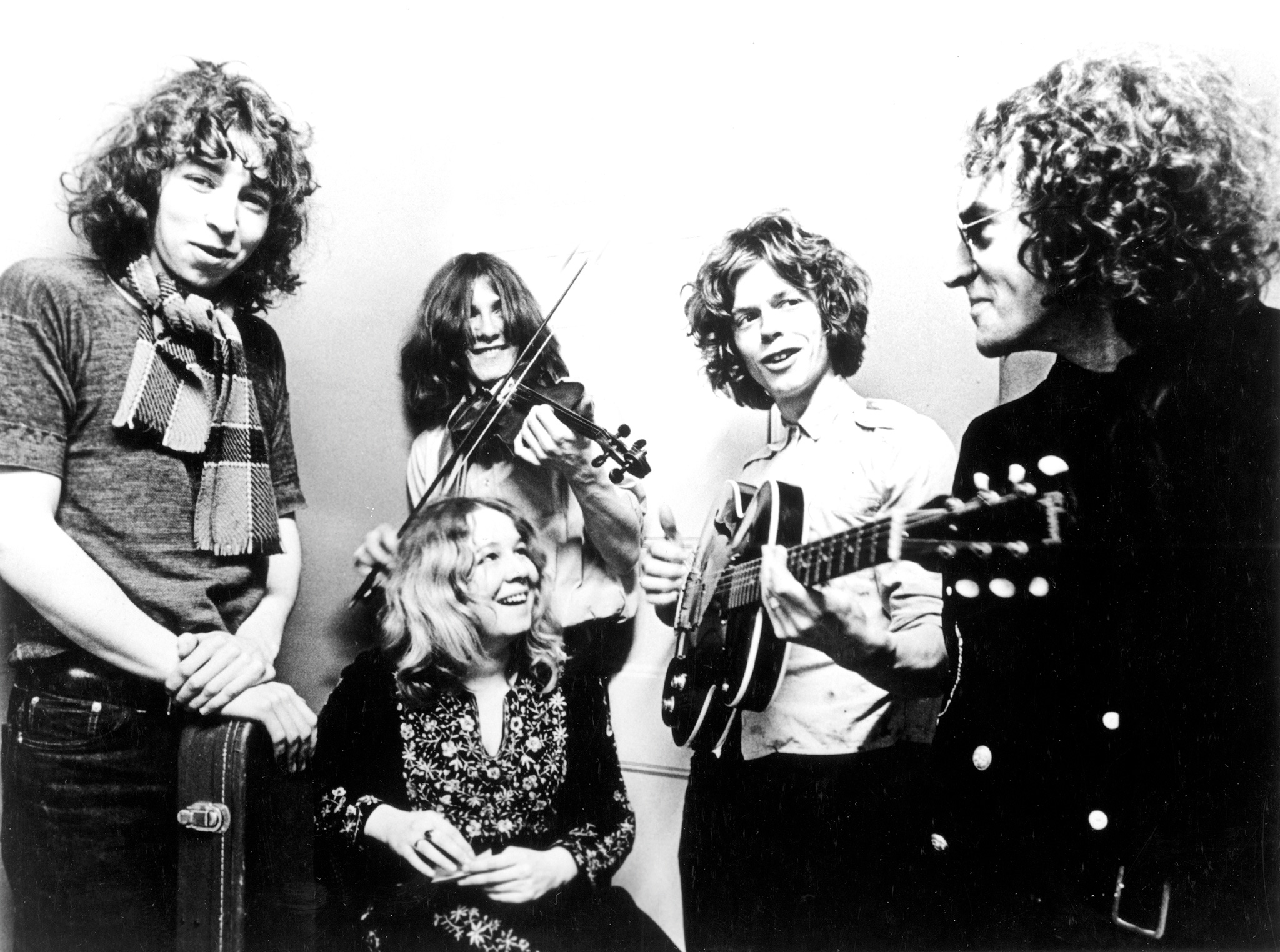
**Above: Fairport Convention in 1969. **
In 1972, Roxy Music (through EG) blazed a trail for progressive, post-modern pop with their debut album, produced by Crimson’s Pete Sinfield. Island also secured distribution for Richard Branson’s new imprint, Virgin, in 1973, and played a role in the unstoppable success of Mike Oldfield’s Tubular Bells. The inscrutable high-glam strangeness of Sparks, who made their Island debut with 1974’s Kimono My House and the No 2 hit This Town Ain’t Big Enough For Both Of Us, were another perfect fit. Never losing sight of its Jamaican heritage, Island’s reggae releases remained second to none, with Bob Marley entering his peak period in the mid-70s. Although Island initially failed to establish a US arm, its artists such as Cat Stevens were a huge success in America.
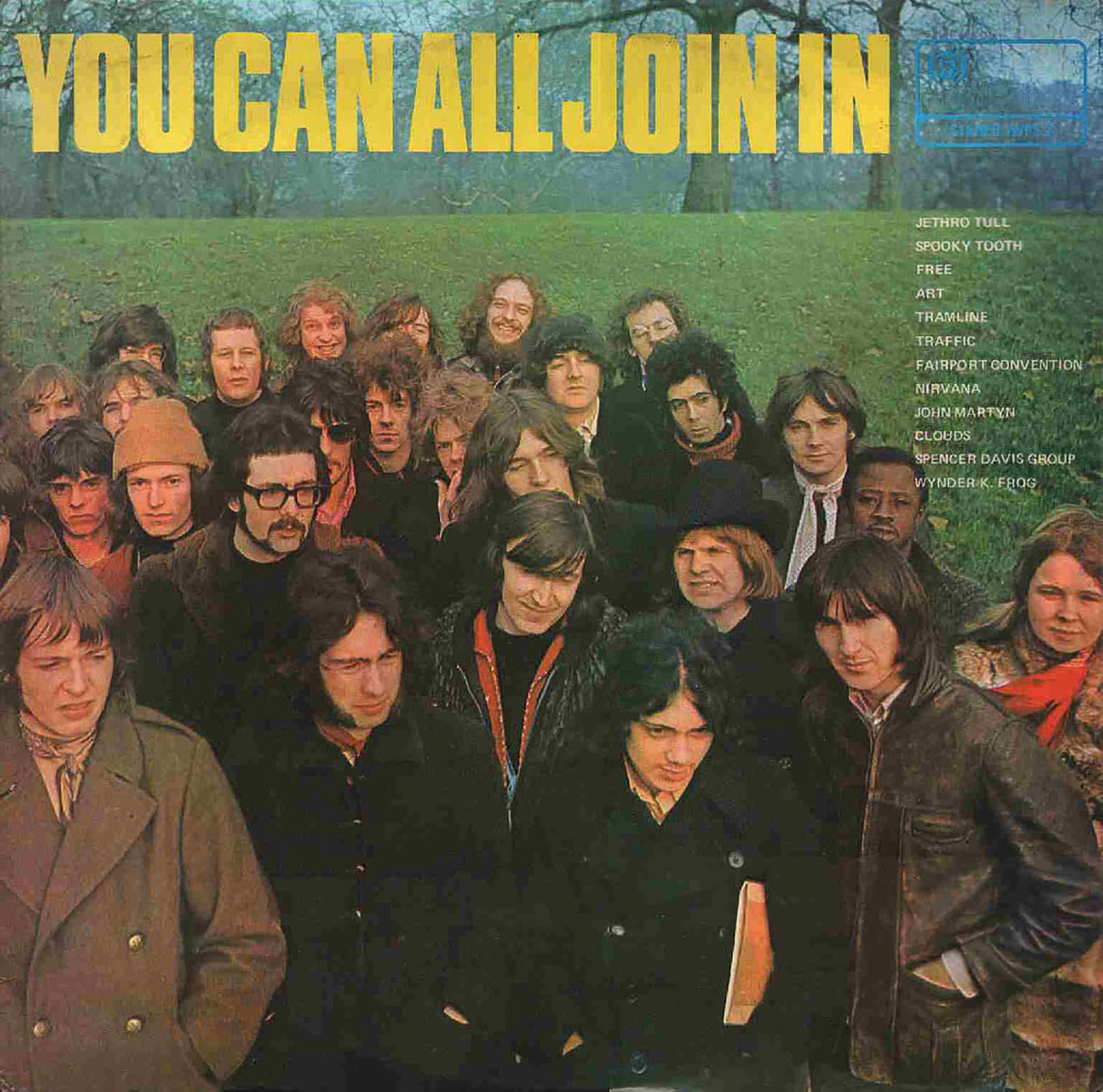
Above: Hippies chill out in the park (below) on iconic 1969 sampler.
WHAT HAPPENED NEXT
The late 70s saw a great deal of change for Island. The EG stable departed to Polydor; Chrysalis and Virgin to EMI. Free, Traffic and Fairport Convention had split, and the label suffered more than its fair share of tragically early deaths, with the passing of Nick Drake, Free guitarist Paul Kossoff and Bob Marley.
It can be argued that the label lost focus after Marley’s early death in 1981. Although Island’s maverick spirit continued with the distribution of Stiff Records and their patience and investment was writ large by U2, who found their commercial feet with third album War in 1983. Island also administered the ZTT label, whose act Frankie Goes To Hollywood would dominate 1984. Lest we forget the epic title track of their debut album, Welcome To The Pleasuredome, smuggled prog back into the pop charts.
Meanwhile, the ongoing, quiet cottage industry of Nick Drake meant that his albums would be kept on catalogue and his Fruit Tree box set was first issued in 1979. Island also diversified into films and scored great success with Kiss Of The Spider Woman (1985) and Mona Lisa (1986).
Chris Blackwell sold Island to PolyGram in 1989 for a reputed £180 million. He later said: “It had gotten too big and too corporate for me and I couldn’t really handle it.” Blackwell stayed on as CEO of Island Entertainment – the only time in his life Blackwell said that he had “a proper job” – and oversaw the label’s release of its sizable archive on CD before finally leaving in 1997.
Blackwell went on to found Palm Pictures, a music and film production company, as well as looking after his property and hotel portfolio. Seagram acquired PolyGram in the late 90s and merged the company with Universal Music Group, and Island’s independence was over. The view was to ensure that Island was truly a global company.
** **

Above: Emerson Lake & Palmer: lucky men.
TODAY
The Island imprint continues to go from strength to strength as part of Universal Music. In the UK, it is led by label President and recent OBE Darcus Beese. Amy Winehouse became one of Island’s biggest stars of the early 21st century, and the label still carefully curates her legacy. Island’s ongoing open-minded A&R policy means that Bellowhead, Florence And The Machine and Jessie J are all labelmates.
In 2009, Island celebrated its 50th anniversary with a week-long series of concerts, featuring artists ranging from Grace Jones to Baaba Maal to Spooky Tooth playing at London’s Shepherd’s Bush Empire. Chris Blackwell attended the opening night, and there was an accompanying West End exhibition of the label’s many artifacts.
WHY SHOULD WE CARE?
Chris Blackwell’s strong quality control and desire to be “the best – not the biggest – record company in the world” set an undeniable example for other labels that followed in its wake. Island has forever managed to retain a cool cachet. Blackwell is the prototype for the charismatic independent label boss, a man committed to his imprint and the artists on it. A lover of music and business, Blackwell was not always a personal fan of all of his label’s acts. He did, however, always value his management team’s opinions and A&R decisions.

Island Life: The Stats Behind The Label
First album release: Lance Haywood [sic] At The Half Moon Hotel, Montego Bay by Lance Hayward and Ernest Ranglin (Island CB 22, 1959)
First single release: Boogie In My Bones by Laurel Aitken
First Island pink label release: London Conversation by John Martyn (Island ILP 952. October 1967)
First No.1 album: Although part of the Chrysalis management and production stable, Stand Up by Jethro Tull (ILPS 9103, August 1969) was the first to bear the Island logo. War by U2 (ILPS 9733, March 1983) was the first true Island No.1
Last No.1 album: I Forgot Where We Were by Ben Howard (Island 470 104-3, October 2014)
First UK No.1 single: Video Killed The Radio Star by Buggles (Island WIP 6524, October 1979)
